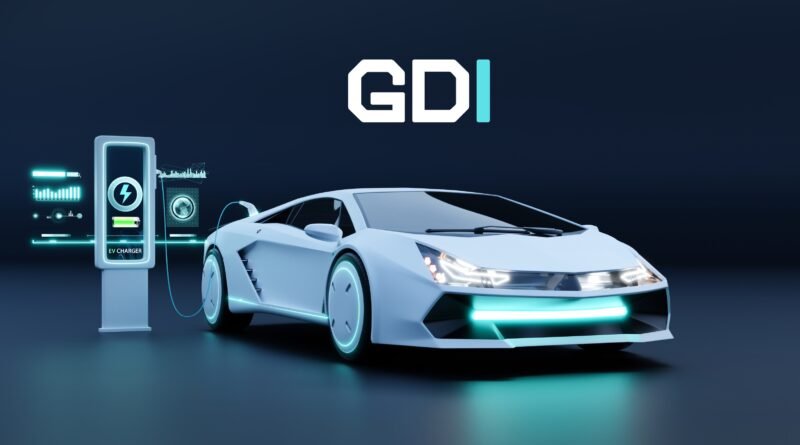GDI Secures $11.5M to Revolutionize EV Charging with Silicon Anode Battery Tech
GDI (Global Drying Industries), a cutting-edge US battery technology venture, has raised $11.5 million in new funding to accelerate the commercialization of its fast-charging silicon anode technology, which aims to cut EV charging times to as little as 15 minutes. The breakthrough also promises to reduce the EV industry’s heavy reliance on Chinese-sourced graphite, which currently dominates the anode supply chain.
Company Overview & Technology
GDI (Global Drying Industries), founded by Rob Anstey, is based in Rochester, NY, with R&D and pilot production in Eindhoven, Netherlands, and a roll-to-roll facility in Lauenförde, Germany.
- Technology: 100% silicon anode—no graphite—using patented roll-to-roll processing on modified glass-coating equipment .
- Performance: +30% energy density vs graphite; 3200 mAh/g; enables 15-minute (10→75%) charging for hundreds of cycles; lab-records achieved 280 Wh/kg in pouch cells .
- Safety: Passed nail-penetration tests with only ~10–30 °C temp rise—dramatically improving thermal safety .
Funding & Investors
- Latest: $11.5M Series A Follow-on (May 2025), led by Helios Climate Ventures, Impact NY, EIT InnoEnergy, plus Groningen provincial loan program—bringing Series A to over $20M.
- Prior Finance: $13.3M Series A in Sept 2022; additional US government grants from US Army, DOE, DLA totalling $3M.
- Debt/Equity: €20M issued by European Investment Bank via InvestEU to support EV-scale operations in Germany.
Products & Services
- Silicon Anode Material & Processing: Raw silicon powder + roll-to-roll coating service on copper alloy substrate from Schlenk AG, using AGC plasma/coating tech .
- Cell Partnerships: Joint-development with Navitas (third-party validation) and undisclosed EV cell manufacturer; target med-tech and defense first, expanding to EV by 2030.
Market Context
- Market Size: Silicon anode materials projected to exceed $15B by 2035, driven by EV demand .
- Strategic Need: China controls >90% of global graphite refining—GDI’s silicon replaces graphite and reduces geopolitical risk.
- Scale Roadmap: 100 MWh scale by 2024; 10 GWh by 2028 .
Market Impact: Strengthening US Battery Independence
The US currently imports over 90% of its graphite anode materials from China, making domestic alternatives a top national priority. GDI’s silicon-based solution aligns with the Biden administration’s push for clean energy independence, and supports the Inflation Reduction Act’s incentives for US-made EV battery components.
The global EV battery market is projected to hit $225 billion by 2030, with anode innovations playing a key role in driving faster adoption. As automakers race to offer faster charging without sacrificing range, GDI’s technology stands at the forefront of solving a critical bottleneck.
Leadership and Vision
GDI is led by a team of battery veterans, nanotech researchers, and materials engineers, including:
- Dr. Robert Simmons, CEO – former Tesla and Samsung SDI battery materials lead
- Dr. Elena Cheng, CTO – nanomaterials expert with over 30 patents in energy storage
- Alex Morgan, COO – former VP at QuantumScape and Panasonic Energy North America
The company aims to license its technology to major cell manufacturers while also exploring joint ventures with automakers for direct integration.
Pitch Deck Summary
| Key Message | Details |
|---|---|
| Problem | Graphite dependency, slow charging, limited energy density |
| Solution | 100% silicon anode with +30% energy density and 15-min charging |
| Tech Edge | Patented roll-to-roll scalable on existing equipment |
| Validation | Third-party tested, safety verified, cell ready for drones/medical devices |
| Commercial Targets | EV cell sampling 2026, design wins by 2030 |
| Funding Ask | Production scale-up to 10 GWh by 2028 |
| Investors | Helios, InnoEnergy, EIB, US govt grants |
Investor Profile Breakdown
- Helios Climate Ventures: Focused on climate tech; partner Josh Grehan emphasizes scalable, low‑cost silicon solutions.
- EIT InnoEnergy: EU clean energy fund driving domestic supply chain resiliency.
- EIB / InvestEU: Strategic funding with equity component to shift Europe away from Chinese graphite.
- US Government Grants: Support from Army R&D and DOE SBIR underscores national interest in resilient battery tech .
Competitive Comparison: GDI vs. Sila & Group14
| Feature | GDI | Sila Nanotechnologies | Group14 Technologies |
|---|---|---|---|
| Technology | 100% silicon anode, roll-to-roll | Silicon-carbon composite Titan Silicon powder | SCC55: silicon-carbon composite |
| Charging Performance | 10→75% in 15 min, energy +30% | 10–80% in ~20 min, +20% range | Target similar gains; scaling via Porsche support |
| Commercial Stage | Pilot, cell-validated, design wins in progress | Supply to Mercedes, Panasonic; factory built in Moses Lake | Factory in WA; Porsche-backed; US DOE support |
| Safety Tests | Nail penetration passed in pouch cells | Not publicly emphasized | Safety implicit via composites and DOE testing |
| Scale Timeline | 100 MWh→10 GWh by 2028 | Factory scaling for automotive use | Factoryed for high auto-grade volumes |
Why It Matters
- Fast charging (15 min to 80%) removes a key barrier for EV adoption.
- Energy density gains (+30%) could enable >500 mile ranges in premium EVs.
- Supply independence, reducing China’s graphite stranglehold.
- Sustainable scaling through repurposed solar/glass-line infrastructure.
FAQs About GDI and Silicon Anodes
What makes silicon better than graphite in EV batteries?
Silicon stores more lithium ions, enabling faster charging and higher energy density. However, it typically degrades quickly—something GDI has addressed with a patented porous design.
Will GDI’s anodes work with current battery manufacturing systems?
Yes, GDI’s solution is engineered to be drop-in compatible with existing lithium-ion battery production lines.
When will GDI’s technology hit the market?
GDI is targeting OEM-level deployment by 2026, with pilot-scale sampling expected in 2025.
How does GDI help reduce China’s influence in the battery supply chain?
By replacing graphite with US-made silicon anodes, GDI offers a scalable alternative to China-dominated graphite sourcing, supporting domestic supply chain resilience.
🔍 Final Thoughts
GDI is a standout among silicon-anode companies with full silicon, roll-to-roll industrial scalability, and safety-validated performance. Backed by strategic investors and pioneering European facilities, their pathway to EV commercialization is structured and credible. While giants like Sila and Group14 continue to validate composites, GDI’s all-silicon approach positions it at the forefront of next-gen Li-ion anodes.
Keep Reading:




